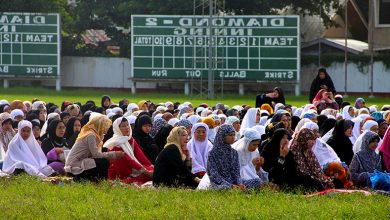Philippine Commonwealth
Although the principle of a commonwealth, an interim period on the way towards independence during which the Americans would remain as observers, had been accepted, the necessary legislation was not passed by the U.S. Congress until 1933. This was the Hare-Hawes-Cutting Act (1933), which was replaced in 1934 by the Tydings-McDuffie Act, slightly amended in the light of representations by Quezon about the disastrous economic consequences of the original Act. Previous American policy on independence had been affected by pressures from the Republican Party, which was opposed to it; and measures favouring independence put forward by the Democratic President Woodrow Wilson (1913-19) had been thrown out by the Republican majority in Congress.
The Commonwealth was to last for ten years, a period too short to permit the reorganization of the economy. The prime considerations had been political rather than economic, although by this time the Philippines were in a position of close economic dependence on the United States. Nevertheless, by March 1935 the new constitution had been drafted, passed and approved by President Roosevelt; and on 14 May the Filipinos voted by plebiscite to accept it. Quezon and Osmeña were now elected as President and Vice-President of the Philippine Commonwealth, respectively.
The passage of the legislation establishing the Commonwealth was made possible by purely economic considerations. In the prevailing economic depression American farmers blamed the low prices they received on competition from Philippine produce; and industrialists complained about the free admission of Philippine products to the American market and their failure to obtain a customs barrier against such imports. The economic crisis of 1929 had promoted the growth of American protectionism and moves for the raising of all customs tariffs.
Originally the American administration had had no particular commercial conditions in mind, since under the Treaty of Paris of 1898 Spanish imports were to have the same rights. The Tariff Act of 1909 was the first change in tariff laws since the Dingley Act of 1897; the act provided the entry of American products into the Philippines entirely free of duty; and similarly Philippine sugar and tobacco were to be admitted to the United States without payment of duty within certain quota, limitations were abolished in 1913. As a result American products, which accounted for 7% of Philippine imports in 1899, rose to 65.5% by 1934, and over the same period Philippine exports to the United States increased from 26% to 84% of total exports.
The availability of American products had discouraged the industrialization of the Philippines and destroyed certain noncompetitive local industries; the American market was now being closed to the Philippines by the erection of tariff barriers, regardless of the fact that none of the neighbouring countries could offer alternative outlets for Philippine products. The significance of these developments did not escape the Filipino peasants, who rose in revolt against the Commonwealth (the Sakdals). Moreover the country’s difficulties were aggravated by the fact that almost the whole of the retail trade had over the years been monopolized by the Chinese (about 75% of the total) and Japanese, leaving practically none of it in the hands of Filipinos.




